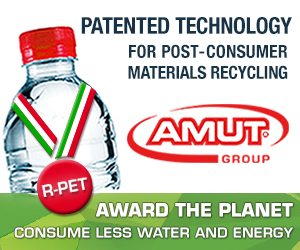
Nina Bellucci Butler speaks at the Resource Recycling Conference.
U.S. and Canadian end users could consume more of the recovered plastics generated domestically if prices and specifications meet their needs. But a handful of converging market trends are standing in the way of significant growth.
“The barriers are not enough price advantage and not enough PCR (post-consumer resin) available that matches the specifications,” said Nina Bellucci Butler, CEO of consulting and research firm More Recycling. “Those are challenging economic issues.”
Butler was speaking during a markets-focused plenary session at the 2017 Resource Recycling Conference in Minneapolis last month. Her presentation focused on the markets for recovered plastics.
The information on domestic demand came from an industry survey sent to thousands of companies and groups. The research effort was funded by the American Chemistry Council (ACC), Association of Plastic Recyclers (APR) and the Sustainable Packaging Coalition (SPC).
The study began in January and was conducted by More Recycling and independent testing and R&D company Plastics Forming Enterprises (PFE).
“I was not able to alleviate the concern that we have a demand problem,” Butler told the audience. “Most of the companies that responded that they have demand for this material are already using it. Only about 2 percent were companies that are using only virgin right now.”
The survey showed that domestic end users of recycled plastics purchased about 48 percent of what was available in the U.S. and Canada, she said.
Economic realities are an important factor in why that number is not higher. The availability of low-cost shale gas led to a boom in the development in virgin PE production capacity, Butler noted. That increasing supply and low price of virgin PE is making it difficult for recycled PE to emerge as a lower cost option.
“We do have … good economic conditions right now so there’s demand for product,” she said. “We have some commitments for use of PCR (post-consumer resin). We have some legislation that encourages more PCR. But the low price of virgin has fundamentally affected the fundamentals of the supply-demand balance of scrap plastic.”
Sorting constraints
When it comes to processing capacity and end markets, recycling realities really depend on the resin, Butler’s presentation showed. She noted that of the 5 billion pounds of plastic collected for recycling in the U.S. last year, 34 percent was PET bottles, 23 percent film, 22 percent HDPE bottles and 21 percent non-bottle rigids.
For PET and HDPE bottles, North American businesses still have the capacity to purchase and process more, although PET and HDPE reclaimers are facing challenges from lightweighting and shifts to flexible film packaging, she said.
PP is an emerging resin that has seen growing recycling rates. But for PP, as with the other plastics, the key challenge is separation to create a quality bale, Butler said.
“We have capacity to purchase HDPE, PET, PP and other resins,” Butler said. “We don’t have the capacity to take the material from the MRF (and) further segregate it so we can get those discrete resins to market.”
Recovered PS also has quite a bit of end user demand but lacks the secondary sorting capacity necessary to generate a clean stream. The industry also needs to find more efficient ways to condense expanded PS and potentially combine it with rigid PS to get it to market, Butler said.
China ban effects
China’s ban is likely to do particular damage with films and non-bottle rigids, Butler said. While collection volumes have been increasing – films are now accepted at 18,000 retail drop-off locations – end markets continue to depend largely on exports.
Butler suspected that China’s restrictions on unprocessed bales could spur increased demand in China for good-quality post-consumer resin from the U.S.
“The problem, though, is that even if there’s that demand for PCR that might displace the demand that was for the non-bottle rigids, film and other unseparated materials, we still lack that infrastructure to segregate and get it to the reclaimers that might be able to produce that material,” she said.
More stories about markets
- Analysis: Import tariffs could support struggling PET
- Aduro loss widens as pilot plant nears commissioning
- Report shows $5B in materials saved from landfills



